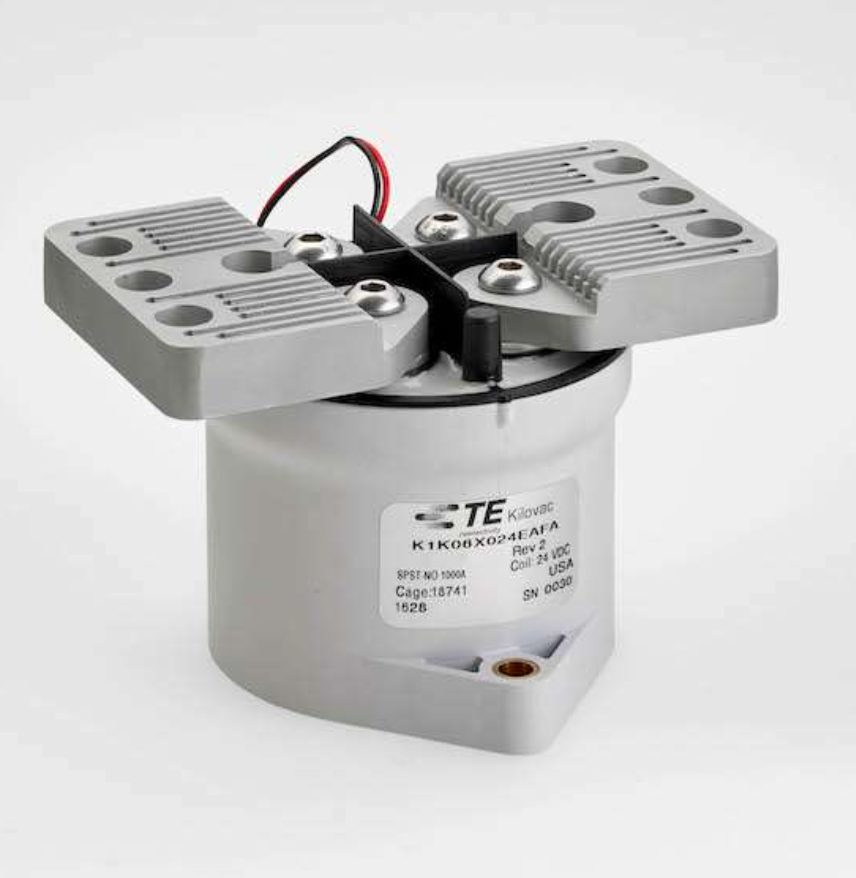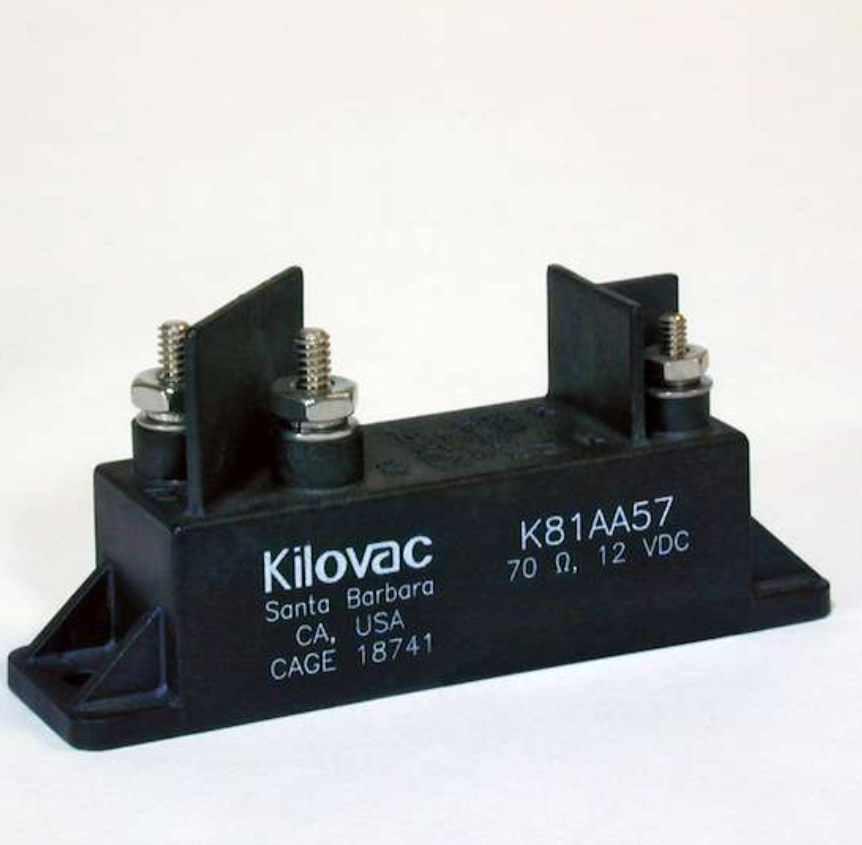Aviation High Voltage Contactor - [Veckway] - Qualified Supplier for Aviation Industry
High voltage/high current circuits in antennas, radars, rangefinders, satellites, military ground vehicles, ships, and other aerospace and defense applications, as well as 270-VDC aircraft power systems, pose unique power management challenges. Today, it is crucial to design solutions that can handle high power more efficiently in a smaller space. The distribution of electric vehicles, charging stations, battery systems, solar and wind energy applications also presents similar challenges. This discussion simplifies the designer's task by describing how advanced relays and contactors handle difficult distribution requirements, and introduces a tool for navigating various contactor and relay functions for easy selection. There are various styles of power distribution technology. Many outdoor switch designs can only withstand voltages of a few hundred volts. However, smaller, lightweight, sealed devices using gases or vacuum with good dielectric properties can switch to 70 kilovolts (kV).
For contactors, the increased contact size and pressure, combined with special alloy materials, can achieve high current management of up to 1000A. Integrating the built-in Hall effect current sensor into the contactor can create an "intelligent" current sensing version of these devices.

When to Consider Vacuum Switches
With traditional switches, it is almost impossible to interrupt a kilovolt circuit due to arc occurrence. When the voltage is high, the air filling the gap between the open contacts quickly ionizes into a conductive path. Therefore, although the contacts are separating, the ionization gas maintenance circuit - this issue is not common in general relays. How to minimize the arc problem in vacuum is to remove ionizable gas from the contact area to solve the arc problem. Therefore, high-voltage switches are designed to work well in vacuum. For example, in a vacuum of 10-6 millimeters of mercury, the dielectric strength per mil of contact gap can reach 2000 volts. Vacuum dielectrics also provide an inert atmosphere for high-voltage contacts. Vacuum actually eliminates oxidation and corrosion. When an arc occurs in a vacuum, air or dielectric gas does not dissociate and produce corrosive byproducts.
RF applications
Good insulation quality and low, stable contact resistance are two good reasons for using high-voltage vacuum relays in radio frequency (RF) switches. However, operating any relay at radio frequencies will result in current and voltage limitations. When the frequency increases, the "skin effect" of current migration from the center of the conductor to the surface of the conductor may be a problem. This is because as the frequency increases, the skin depth of the conductive path decreases, forcing more current to pass through fewer conductors. This will cause local heating on the surface of the conductor. High temperature may damage the seal of the relay.
When a relay is used as an insulator, there is a radio frequency voltage between the open circuit contacts and/or contacts and ground. In all practical applications, the high voltage capacitance of the relay is within the range of 1 to 2 pickup antennas. The leakage current flowing through the capacitor heats the loss element of the insulator, thereby limiting the applicable RF voltage.

Current and voltage limitations make it necessary to reduce the current and voltage specifications for RF applications. They also limit operations to frequencies below 32 megahertz. When selecting a specific relay, these limitations should be considered. When to consider electronegative gas medium switches? Not all high-voltage relays/contactors are vacuum type. Inert gases with good dielectric properties are also used in high-voltage components and systems. This is a flexible solution as voltage breakdown in the pressurized casing can be controlled by changing the gas mixture and/or pressure. The arc extinguishing characteristic of gas pressurization is another advantage, as it usually fully recovers within a few microseconds. The inflation switch device is used for high-voltage power switches, and its function is to close the normally open contacts. One advantage of this choice is that the gas mixture and pressure can be set to trigger the arc before the closed contact is made. In addition, if the circuit voltage is higher than 3500 volts, even if the circuit path is interrupted due to contact bounce, the arc is still sufficient to maintain current flow. This phenomenon contributes to the long lifespan of gas filled relays, as shown in capacitor discharge circuits.
In traditional relays, contact resistance varies periodically. However, in vacuum relays, the resistance is very low and stable throughout the entire lifespan of the relay, with a typical value of 0.015 ohms. Low resistance is caused by uniform cleaning of parts, no oxidation or contamination, and the use of pure metal in the contact area. Due to the sealed contacts inside the vacuum enclosure, switching can be safely performed in explosive or corrosive environments.
In inflatable relays, the contact resistance is usually low, but not as low or stable as in vacuum relays. The contact resistance also varies greatly depending on the testing method used. Measurement circuits with large volume and high current usually lead to a decrease in contact resistance. Gold plating improves stability and reduces the contact resistance of the inflation relay.
The terms "power switching" and "heat exchange" refer to the factors affecting the connection, disconnection, and load of a switching power supply, which involves interrupting or starting the power supply by activating a relay. When the relay is powered on, an arc is formed during the initial closure and subsequent contact bounce process. Electric arcs can cause contact corrosion, which may result in contact welding unless preventive measures are taken. At least, it will cause significant contact damage. Therefore, the duration of the arc, current, and voltage level are crucial for the lifespan and reliability of the relay. High voltage power switch relays typically have tungsten or molybdenum contacts. These metals are very hard and have a high melting temperature, which helps to resist the effects of electric arcs. Some high-voltage relays with milliampere current use copper contacts, but they are typically used for "carry only" applications. The type of circuit load is an important factor in selecting suitable relays. Circuit loads can usually be considered capacitive, inductive, or resistive.
Resistance load - Interruption of direct current (DC) resistance load causes arcing when contacts separate, which continues until further separation of contacts. Under certain voltage and current conditions, the duration of the arc depends on the speed of contact separation, cooling and deionization rates, as well as inevitable inductance and distributed capacitance. At the same voltage, alternating current (AC) loads are more prone to interruption than direct current loads because AC loads automatically interrupt every half cycle. Polarity changes can prevent metals from continuing to transfer in the same direction, which often leads to early contact failure with DC loads.
Inductive load - Interrupting DC inductive loads is more difficult than resistive loads. The energy stored in an inductor ([1/2] LI2, where L is the inductor and I is the current in amperes) generates a voltage (- L [di/dt]) that tends to maintain the current. The current continues until the energy of the inductor dissipates. Unless special quick opening contacts or other means are used to interrupt the arc, the duration of the arc depends on the time constant of the load (L/R, where R is the resistance in ohms), which is a direct relationship. AC inductive loads will not cause the same problem as DC loads, as polarity reversal forces the current to zero at the end of each half cycle. In addition, the current and voltage are not synchronized, and in the last part of the current half cycle, the power supply voltage is opposite to the self induced voltage.
Capacitive loads - Closed contacts in DC circuits can cause high surge currents when charging or discharging capacitors. The impact on the contacts depends on the magnitude of the initial peak current and the time constant of the circuit. Similar situations are not common in communication circuits. To achieve optimal results, the relay should be placed on the grounded side of the load. If this is not done, a high current arc may occur between the contacts and the casing, thereby bypassing the load. The power supply is the only limitation for current surges.
In practical applications, these three types of components are usually present, but circuits with important capacitive or inductive components are more difficult to switch due to their energy storage. What further complicates the situation is that some circuits have high surge currents. Under high surge conditions, attempting to interrupt a very high current during contact bounce will result in a heavy arc that causes the contact metal to melt. Ultimately, this may lead to contact welding. In the case of sinusoidal AC, the situation is even worse because the peak voltage and current of the AC are 41% higher than the equivalent DC current under the same load voltage.
Expand your thinking to tackle new challenges
Today, many applications require more power to be used more efficiently in less space. For example, aircraft adopt the 270 volt DC standard to improve the reliability, maintenance, weight, and lifespan of traditional 115/200 volt systems. This development also requires more careful selection of power management technology.
Designers should consider the electrical, mechanical, and environmental specifications of the circuit conditions and relays. Designers should also understand the trade-offs of relay operating characteristics and be aware that relay terminology is a special language with special meanings. Evaluating power management products related to high voltage/high current circuits is a complex topic, just like other aspects of switch technology discussed in this brief overview. In order to make the work of designers easier, TE Connectivity provides a "virtual development toolkit" that covers high-voltage contactors, high-voltage relays, wires and cables, and connectors. Through the convenient online menu of the toolkit, product features and advantages, drawings, 3D PDFs, and specifications can be quickly accessed. This tool provides valuable insights for designers to help them choose switch technologies to handle today's demanding distribution requirements.